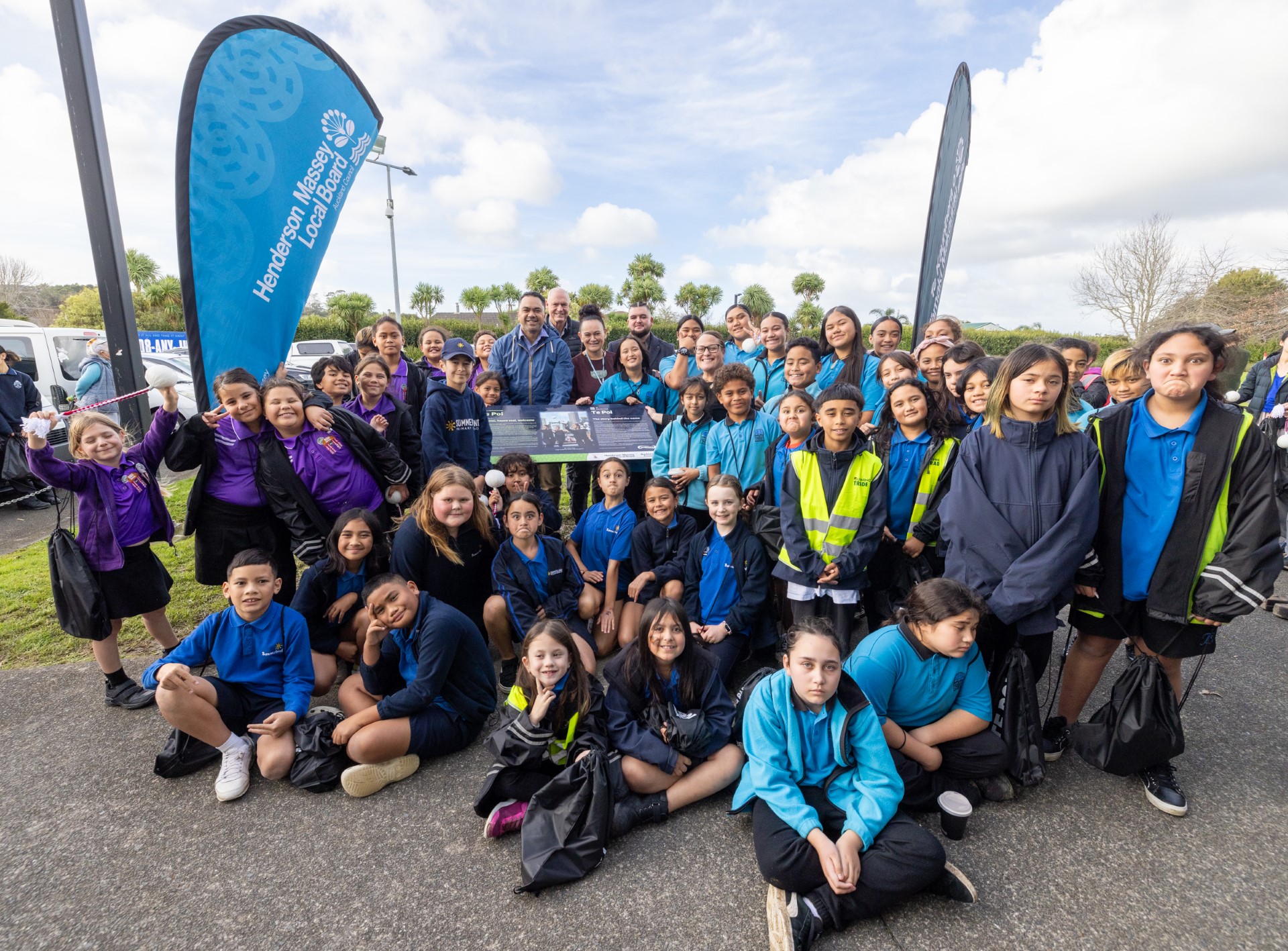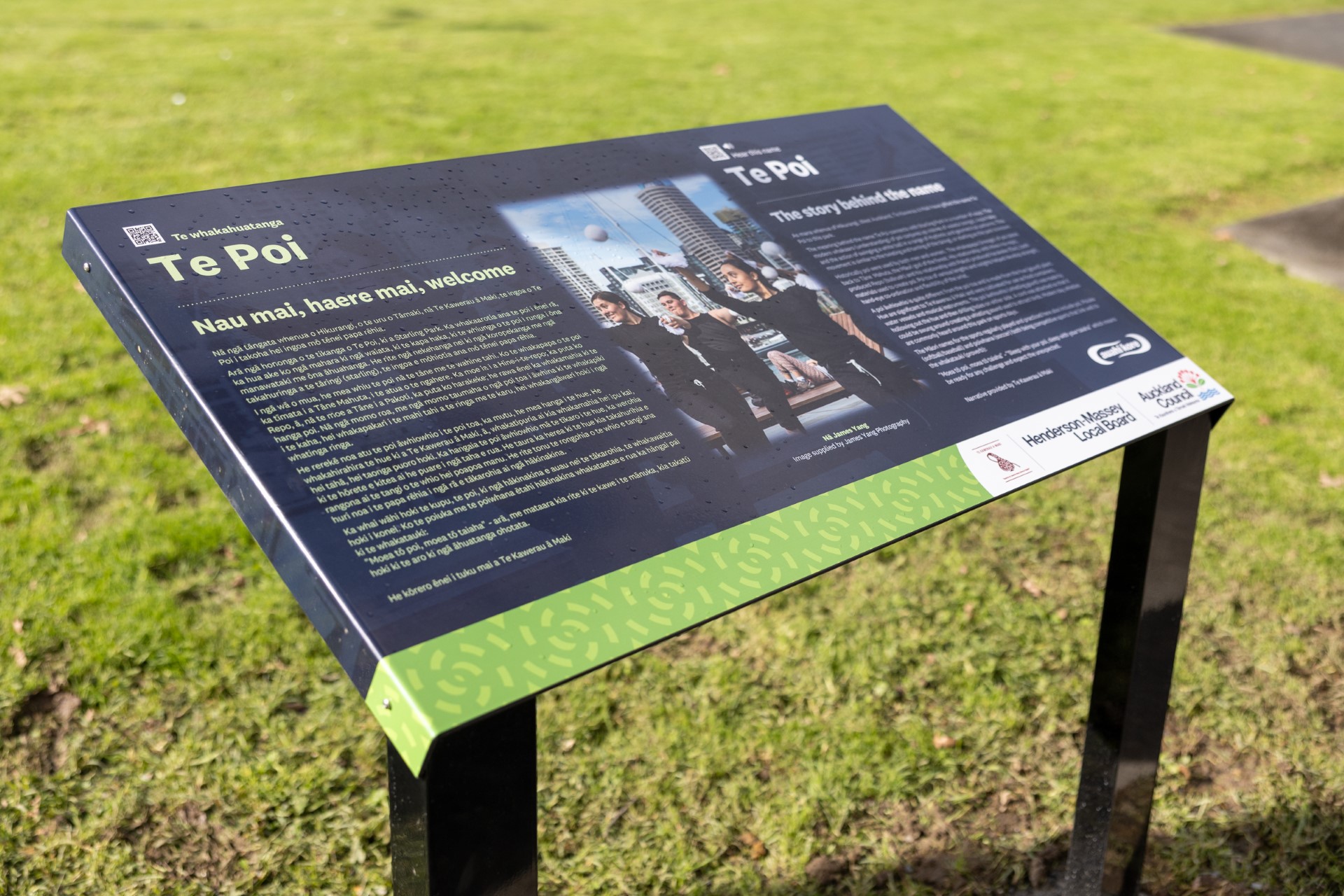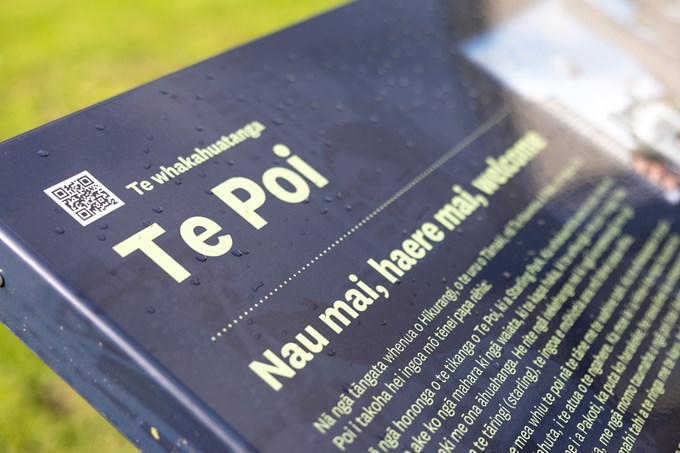A Māori name has been gifted to Henderson-Massey with the dual naming of Te Poi / Starling Park, with a ceremony to share the story and celebrate with the community.
Te Poi was named by local iwi Te Kawerau ā Maki, mana whenua of Hikurangi (West Auckland). As part of Auckland Council’s commitment for te reo Māori to be seen, heard, spoken and learnt in our public places, a full suite of bilingual signage has been installed throughout this park.
“We’re incredibly honoured to receive the name from the local iwi. This is an important way to help celebrate the rich Maori history and culture of our local area,” says Henderson-Massey Local Board chair, Chris Carter.
For Te Kawerau ā Maki, who gifted the name to the park, this ceremony was a great chance to share the name with more people and celebrate the rich Māori history and culture.
“Te Kawerau a Maki see the gifting of the name Te Poi as a tangible example of what cultural collaboration can look like. It is a way for Te Kawerau ā Maki to share our connection to the whenua and the community. We see the name and the associated narrative as an opportunity to share cultural history, promote Te Reo Maori and provide a connection to the people who come here,” says Robin Taua-Gordon from Te Kawerau ā Maki.

The launch of Te Poi / Starling Park
More park name signs in the other sites selected for dual naming in Henderson-Massey are being updated over time, with both their Māori and English names, as they are scheduled to be replaced.
The Story of Te Poi / Starling Park
The meaning behind the name Te Poi connects with Starling Park in a number of ways. The modern whakaaro (understanding) of poi conjures up visions of waiata (songs), kapa haka and the action of swinging a white ball in a range of rhythmic and geometric patterns.
This movement is similar to the twisting and turning of the Tāringi, or Starling as the park is known.
Historically poi were used by both men and women. The whakapapa (lineage) of poi dates back to Tāne Mahuta, the Māori God of the forest. His relationship with Hine i te repo, produced Repo (bullrush) and his relationship with Pakoti produced harakeke (flax), both materials used to create poi. Poi toa of various lengths and weights helped develop strength, hand-eye co-ordination and flexibility of the wrist.
A poi āwhiowhio is quite different from the poi toa and is made from the hue (gourd) plant.

Hue are significant to Te Kawerau ā Maki and were cultivated for use as food containers, water vessels and musical instruments. The poi āwhiowhio (whistling gourd) was made by hollowing out the hue and then drilling holes on either side. A cord was attached so that it could be swung around creating a whistling sound used to attract birds. Modern day whistles are commonly heard around this park on sports days.
The Māori names for the sports regularly played and practiced here also include poi. Poiuka (softball), baseball (poipapa) and poiwhana (soccer) both being competitive sports that link well to the whakatauki (proverb):
"Moea tō poi, moea tō taiaha" - "Sleep with your poi, sleep with your taiaha” Which means be ready for any challenge and expect the unexpected.
Narrative provided by Te Kawerau ā Maki
About the Te Kete Rukuruku programme
In 2017 Auckland Council launched the Te Kete Rukuruku (TKR) project, a culture and identity programme to collect and share the stories unique to Māori in Auckland. The programme is led by iwi, in partnership with the council and its local boards.
One component of this is a naming project which will see iwi and hapu names restored. In some cases, these names existed prior to the current names. In other cases they may be more contemporary names that reflect an historical activity of the area prior to European settlement or sometimes have an environmental connection.
Short narratives explaining the significance of the names are also provided by mana whenua that explain the meaning and show the connection to the place being named.
This is one way for local communities to learn about their Māori history, language and culture. It provides a way of protecting and returning the names and the rich mana whenua stories of Auckland – some of which have been lost over many years.
Other local boards currently participating in te Kete Rukuruku are:
- Devonport-Takapuna Local Board
- Franklin Local Board
- Hibiscus and Bays Local Board
- Howick Local Board
- Kaipātiki Local Board
- Māngere-Ōtāhuhu Local Board
- Manurewa Local Board
- Ōtara-Papatoetoe Local Board
- Papakura Local Board
- Whau Local Board
- Waitākere Ranges Local Board
Stay up to date
Want to stay up to date with all the latest news from your area? Sign up for Henderson-Massey Local Board's E-News and get the latest direct to your inbox each month.


